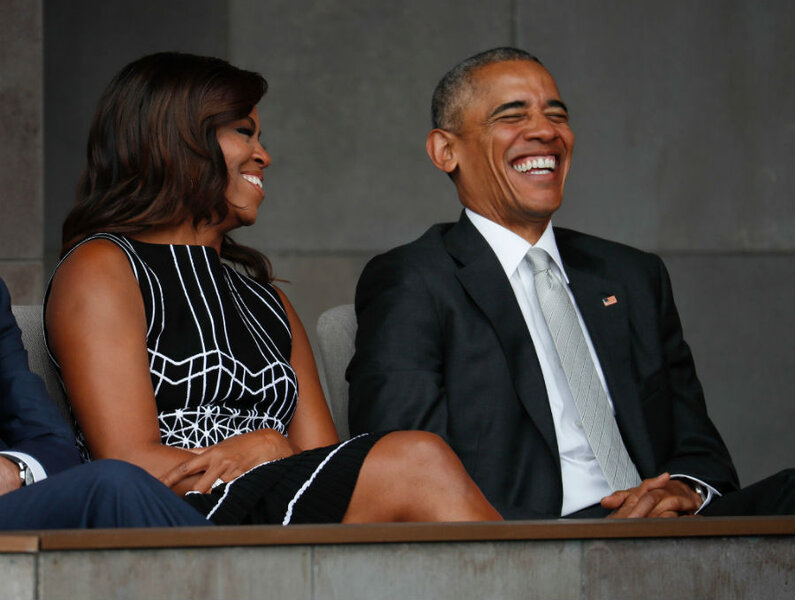What's making President Obama's approval ratings go up?
Loading...
President Obama’s approval ratings have hit 55 percent, marking the highest point in his second term and continuing a seventh-month stretch in which more than half the country has approved of him.
The steady streak is significant for Mr. Obama, whose approval ratings dipped to 38 percent several times during his presidency and were about 10 points lower just a year ago. While the president is seeing the highest approval ratings from Democrats, Republicans and independents have also taken slightly more favorable views of him, the CNN/ORC poll found, marking a shift overall in how the nation evaluates his performance.
Not every president prepares to leave office on such a high note. A look at term-long presidential approval ratings shows that several in the past 60 years have left office under strict scrutiny from those polled, while others have experienced end-of-term boosts.
“I don’t think this is unprecedented,” Reed Welch, who leads the Department of Political Science and Criminal Justice at West Texas A&M University, tells The Christian Science Monitor. “[Presidents] don’t necessarily end their presidencies on bad terms. In Obama’s case, he’s going in the right direction.”
Compared to this time last year, support from Obama among Democrats has increased by 12 points, now steady at 89 percent. With independents, he’s up 14 points to a 56 percent approval rating, but has only increased 2 percent among Republicans, hovering at 13 percent.
Obama’s overall rating puts him on par with former President Ronald Reagan, whose ratings exceeded 60 percent after George H. W. Bush was elected president in November of 1988. George W. Bush, on the other hand, saw his ratings drop to lows of 27 percent during the final months of his presidency.
A number of factors play into how the public perceives the president, but an extremely polarizing election with two historically unfavorable candidates could be helping to boost the current president’s ratings.
“In an election year, you get more partisan,” Dr. Welch says, which could explain the nearly 90 percent approval rating among Democrats. “You don’t like hearing the Republicans demonize him or demonize Hillary Clinton.”
Still, special circumstances could be at play.
“This isn’t any election year,” he adds. “Clinton and [Donald] Trump are historically low in their favorability ratings. I think people look at President Obama and he looks pretty good compared to these two.”
But factors directly related to Obama’s performance, and challenges facing the nation, could account for the improvement. International travel, economic improvement, and a negative public perception of Congress along with a positive approval of first lady Michelle Obama could all serve as factors influencing public opinion on the president, Wayne Wanta, a journalism professor at the University of Florida, tells the Monitor in an email.
Obama has taken more international trips recently, an act which boosts his rapport with the public by making him appear more presidential. The economy has also seen stark improvement compared to when Obama took office nearly eight years ago, and more might be willing to give him credit for the positive trend.
But it was in February that Obama crossed into majority approval numbers – a time when the presidential primary elections were well underway. That same month, Supreme Court Justice Antonin Scalia died unexpectedly, prompting the president to appoint a new justice to the court.
“People are angry because in their eyes, Congress has been doing very little,” Dr. Wanta says. “The refusal to consider the Supreme Court nominee is a great example. The president has been pointing out that he did his job in nominating a replacement for the late Antonin Scalia. And he has been pointing out that the Senate is not doing its job by not scheduling hearings.”
Given the sometimes multifaceted, and unsteady, nature of officials' approval ratings, it’s hard to say whether or not the president will see the trend continue over his last three months in office.
“I think almost all presidents see their approval ratings slip late in their terms,” Wanta says. “It’s inevitable. No president is perfect, and they often draw a great deal of criticism from Congress and the media.”








